How to repot a succulent: a step-by-step guide
Want to know how to repot a succulent? Our expert advice makes it easy
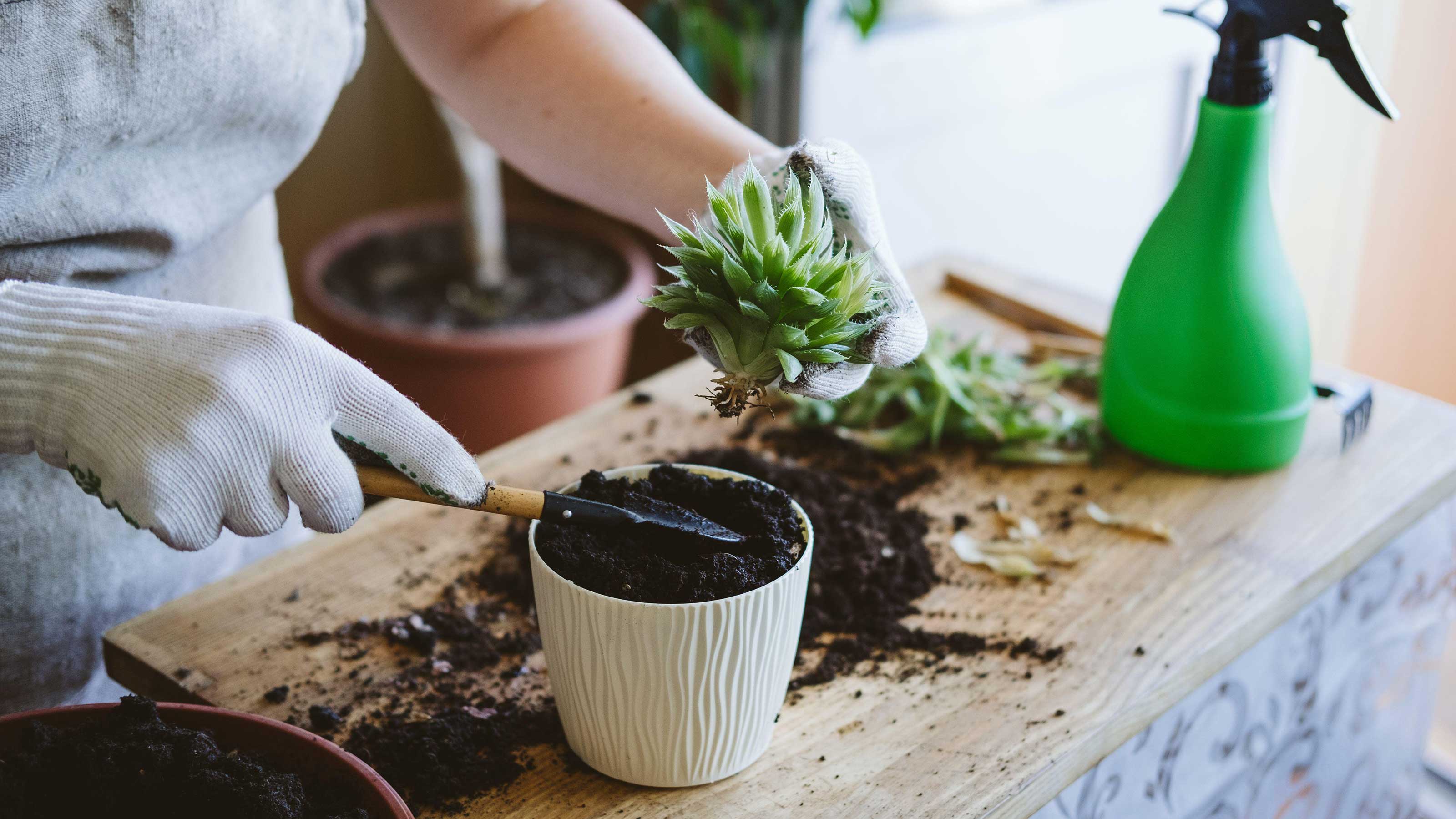


It's always worth knowing how to repot a succulent, as, although slow-growing, these houseplants all need upgrades on both their soil and their containers at some point.
Learning how to grow succulents is a wonderful choice for home decor. They're bright and colorful, come in a fascinating array of shapes and sizes, and they're easy on maintenance, too – as long as you don't try to overwater them.
If your plant has outgrown its pot, giving it a new home is simple, as this guide explains.
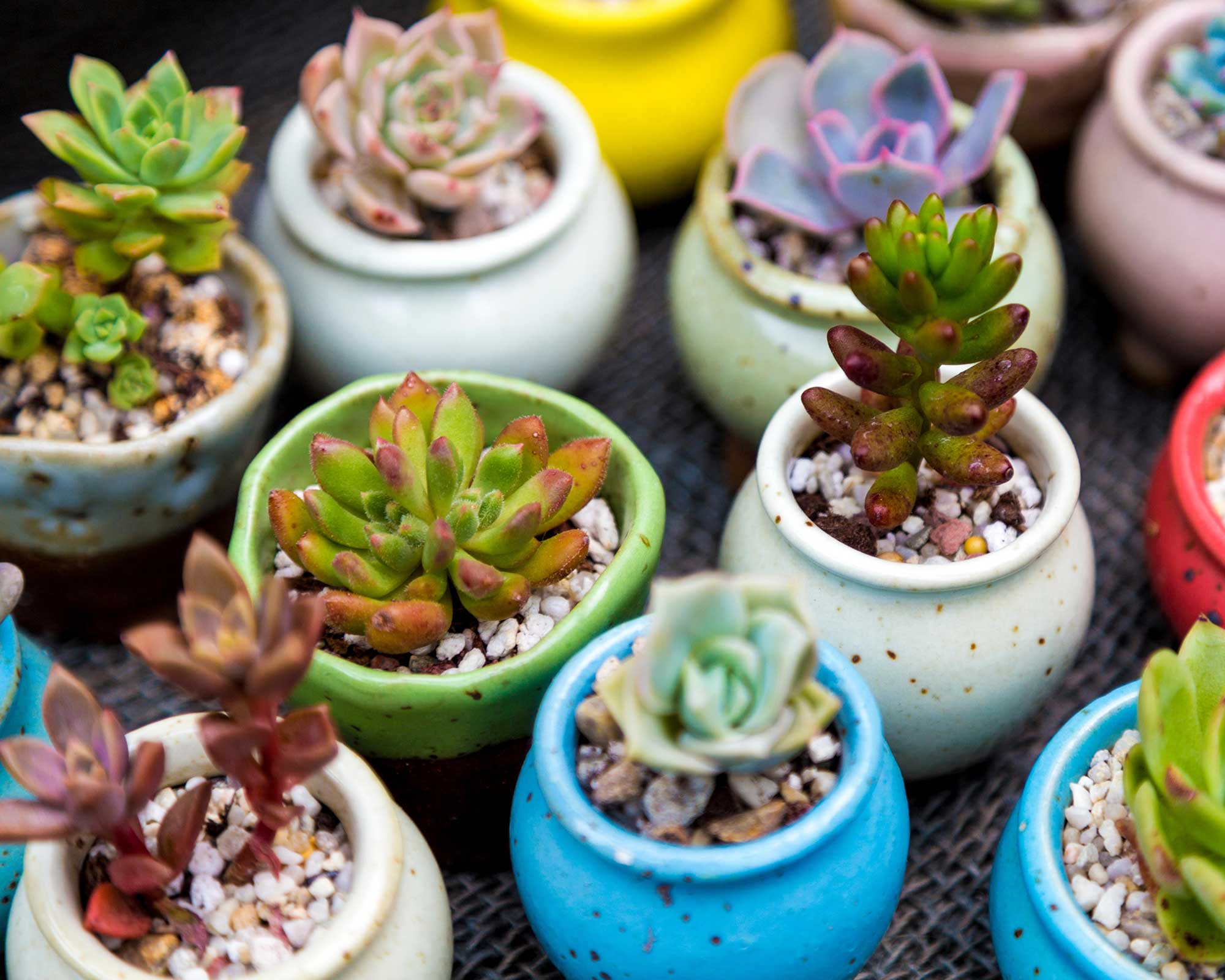
Succulents come in a wide range of colors and forms
How to repot a succulent in 5 simple steps
When learning how to repot a plant, look at the visual clues first. For succulents, check the underside of the pot for signs of roots.
'If the roots are pushing through the drainage hole and matting the compost surface, it’s time to give your succulents more room,' John Negus from Amateur Gardening tells us. The process is simple:
- Prepare your repotting tools. You'll need a good soil mix, a new pot – terracotta with drainage holes is the best for this – and garden-friendly tweezers and scissors.
- Extracting your succulent from its current pot is a delicate act (especially if the plant is on the smaller side). John Negus suggests watering the compost to loosen any roots clinging to the pot wall, then gently easing out the root ball. If that doesn't come easily, you can try tipping your plant sideways and taking hold of the succulent at its stem. If you can't access it with your fingers, a small trowel or garden-friendly tweezers are a good replacement. For particularly stubborn succulents, you can use chopsticks to poke through the drainage holes which will help to loosen up the soil.
- Allow for the excess soil to fall away from the plant and root system, then give it a gentle shake. You want to remove as much of the old soil as possible to ensure better growth. Some gardeners like to gently wash the roots with water and then dry them off in the sun, and you can trim back the roots a little with sterilized scissors, too.
- Fill the new pot two-thirds of the way up with a soil mix that's appropriate for succulents. John Negus suggests using 2in (5cm) of crocks, stones or gravel over the drainage hole, filling in with 2in (5cm) of John Innes No. 1 potting compost mixed with a quarter part, by volume, of grit.
- Place your succulent into its new pot, then cover up the roots with more soil mix, gently firming it around the roots. 'When you’ve finished, the top of the root ball should be 2in (5cm) below the pot rim. Repotting like this won’t jeopardize your plant’s ability to flower,' says John – that is, if it's a flowering variety.
Avoid watering your newly repotted succulent straight away – you don't want to give it root rot. The recommended time to wait is about a week, so the succulent's roots can take all the moisture from the new potting soil first.
When the soil is completely dry, you can give the succulent a good watering, but don't leave it to soak.

John has been a garden journalist for over 50 years and has delivered many talks on horticulture. He also regularly answers readers' questions in Amateur Gardening magazine and shares his advice on all types of plants – succulents included.
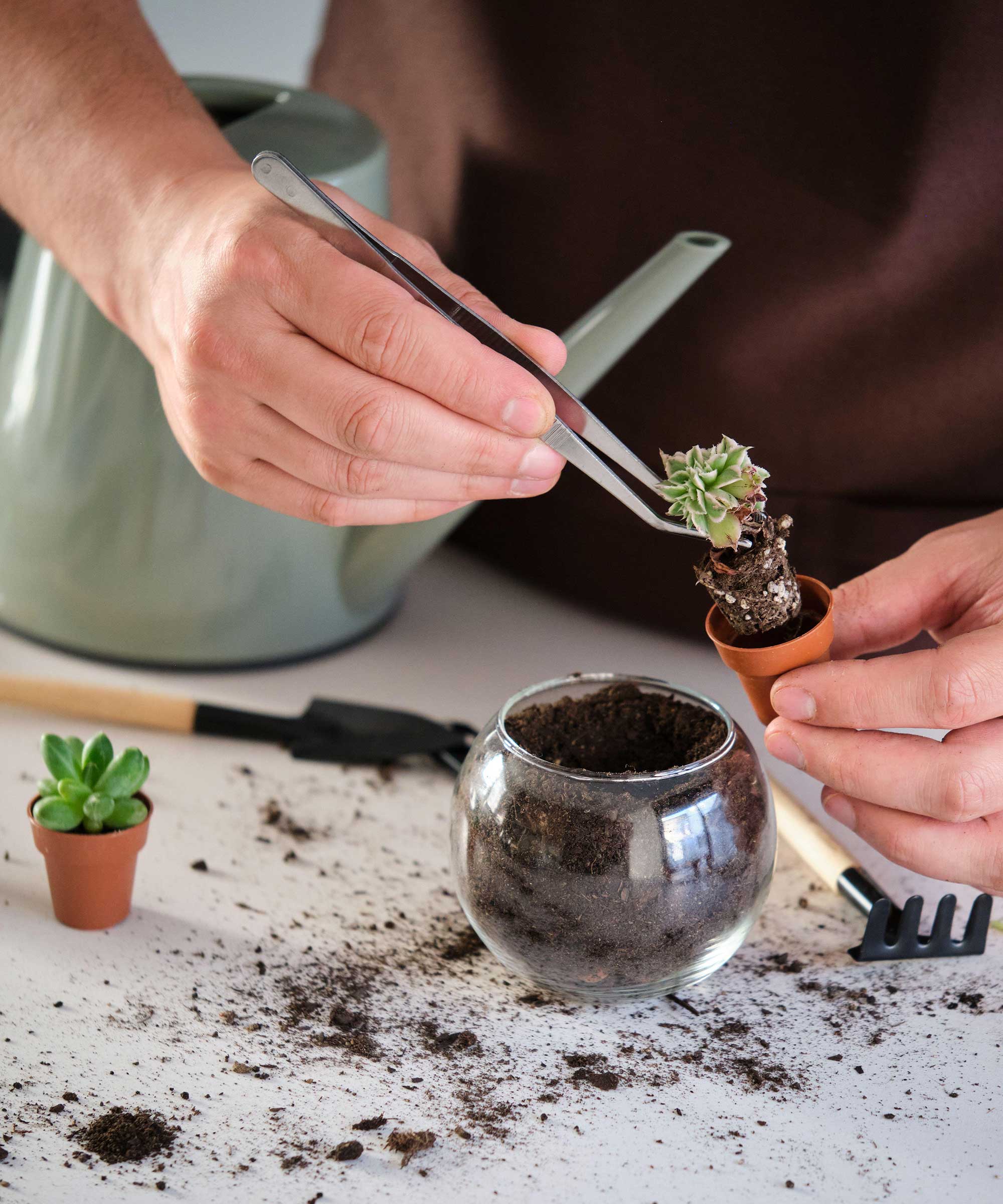
Use tweezers to lift out stubborn succulents from their pots
When is the best time to repot a succulent?
It's best to repot your succulent just before its growing season starts, so usually either in early spring or early fall, depending on the variety.
In terms of growth, you should aim to repot your indoor succulents every two years with fresh soil, or sooner if they're clearly outgrowing their pot.
It's also recommended to repot newly-purchased succulents, as they're often in small plastic pots which aren't the best option. Using a terracotta pot (Amazon has plenty to choose from) is much better for controlling the moisture levels of succulent soil.
If your succulent has begun to flower, then hold off on repotting for a while, as you might disrupt the flowering process.
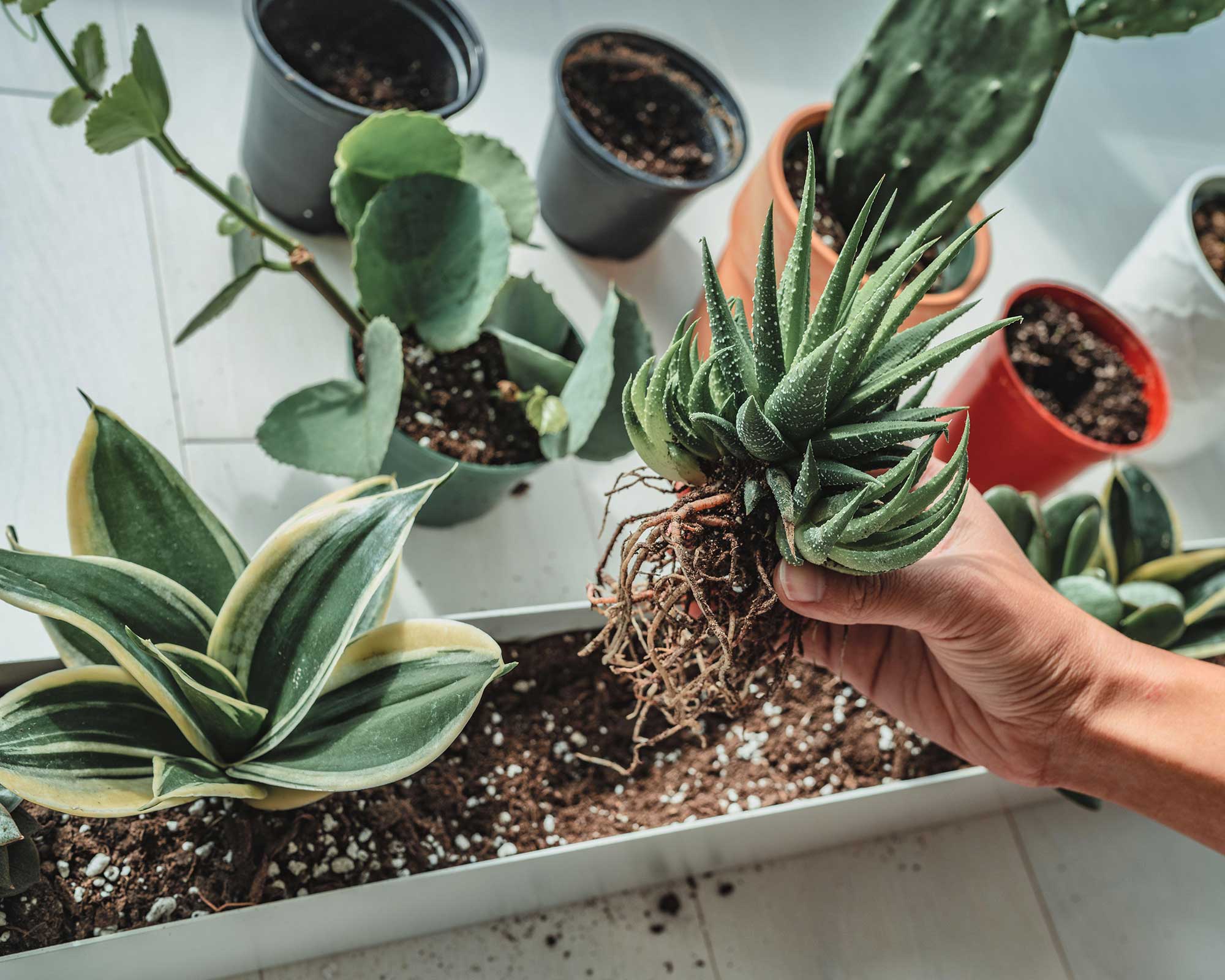
Repot succulents before the growing season to keep them happy
What size pot should I use?
A good rule of thumb is to choose a new pot that's about 10 percent larger in diameter than the current one.
In terms of depth, succulents have pretty shallow roots so are happy enough with shallow containers, too – hence why you'll see succulents in vintage crockery, teapots and other whimsical containers in some indoor gardens. Just make sure there's still a drainage hole.
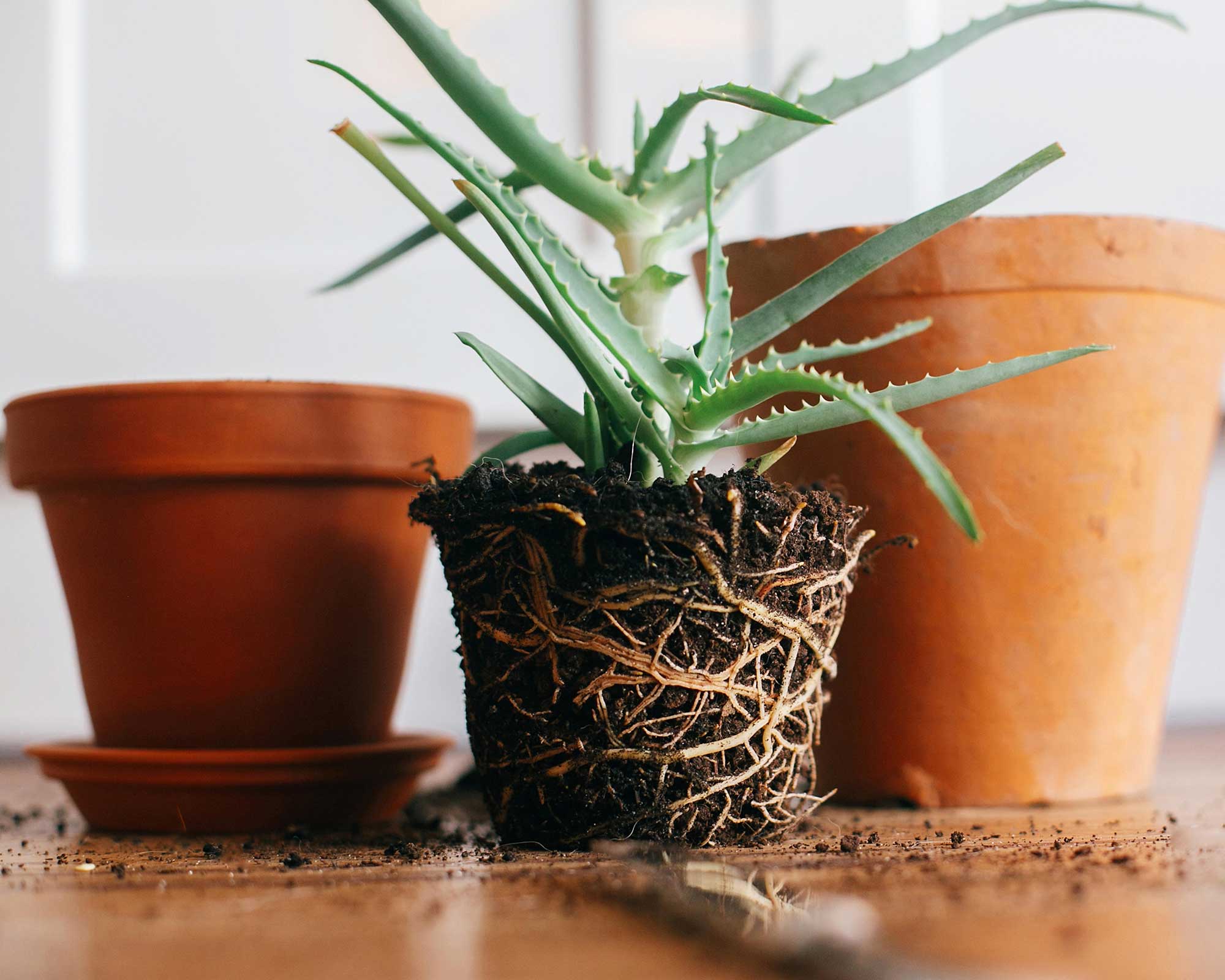
Choosing the right pot for your succulent will encourage good growth
Can I divide and propagate my succulents when repotting?
Yes, you absolutely can. Propagating succulents is a wonderful part of succulent care, and you'll probably end up with plenty of new plant babies – whether purposely or by accident.
If they've fallen off the plant naturally, succulent leaves are really easy to propagate: all you need is to leave them alone until the stem-adjacent side has hardened or callused over. Then, plant the leaf in a compost mix like the one detailed above, and water sparingly.
If you'd like to actively divide up and propagate, it's still really simple. Take a sharp garden knife and gently cut the leaf close to the stem, then follow the above directions for replanting.
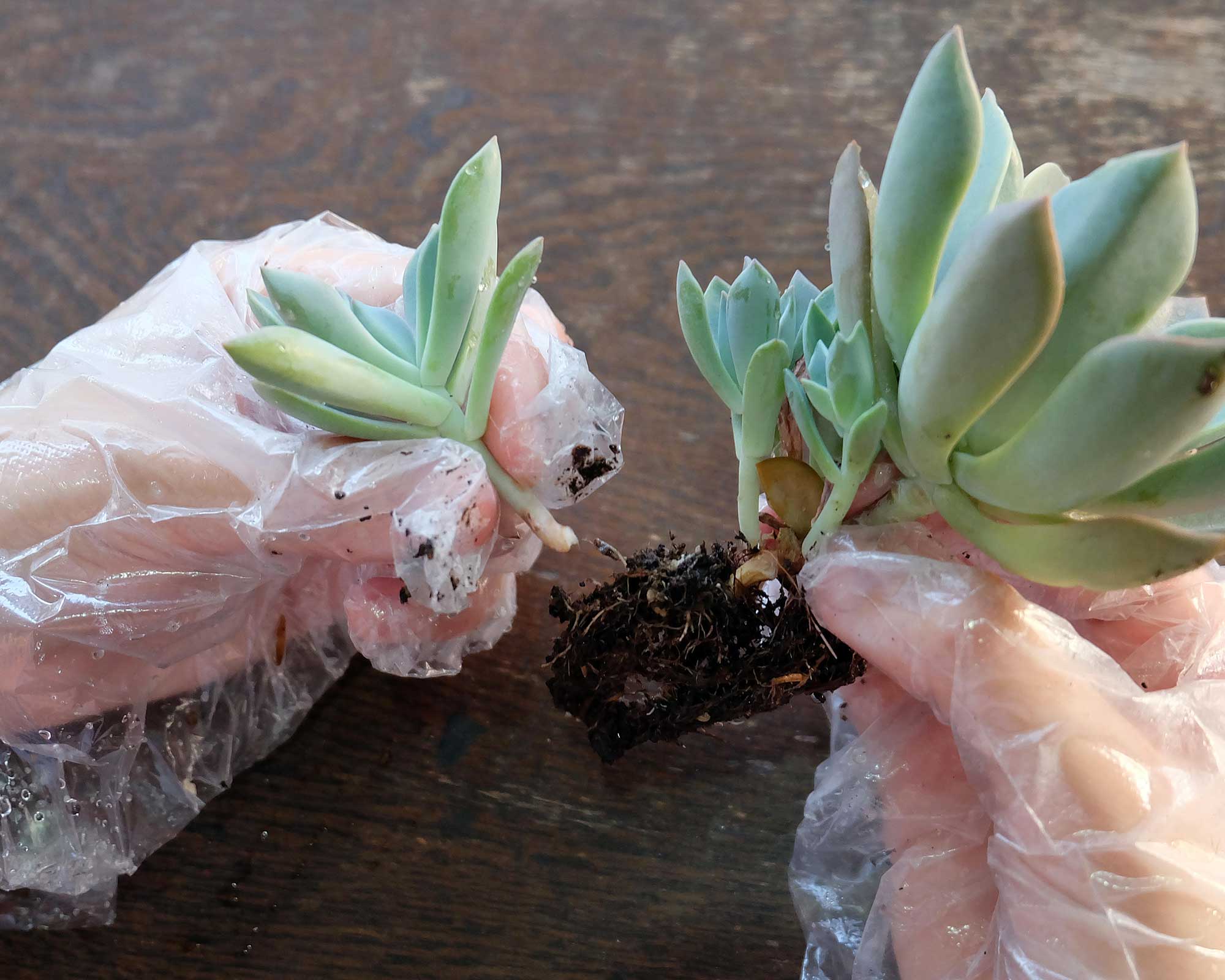
Propagating succulents is an offset of repotting that's easy to achieve

Freelance writer and author Flora Baker is a keen amateur gardener and houseplant enthusiast. Her small garden in South London is a constant work in progress as she gets to grips with snail prevention, DIY trellises and what to plant in shady spots overrun with ivy.
